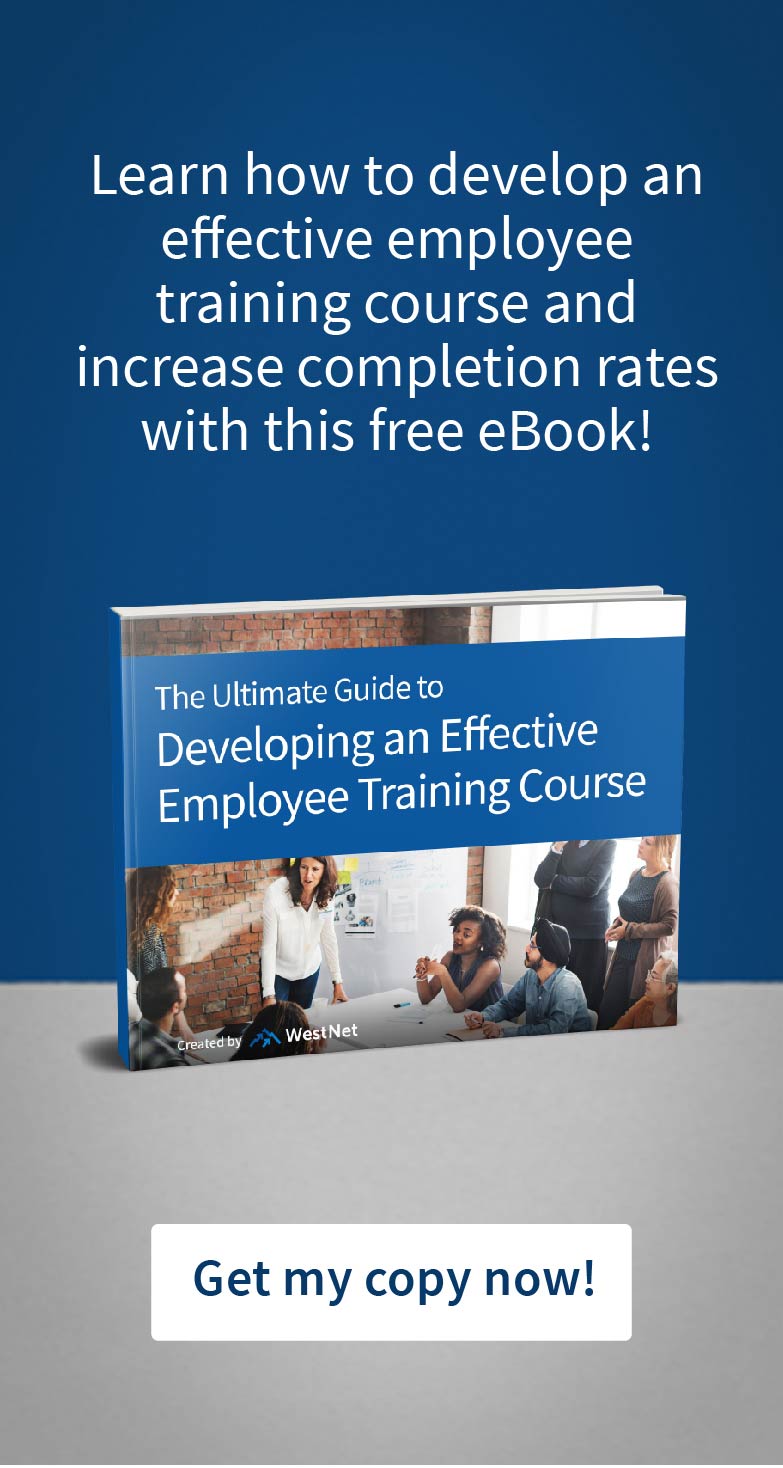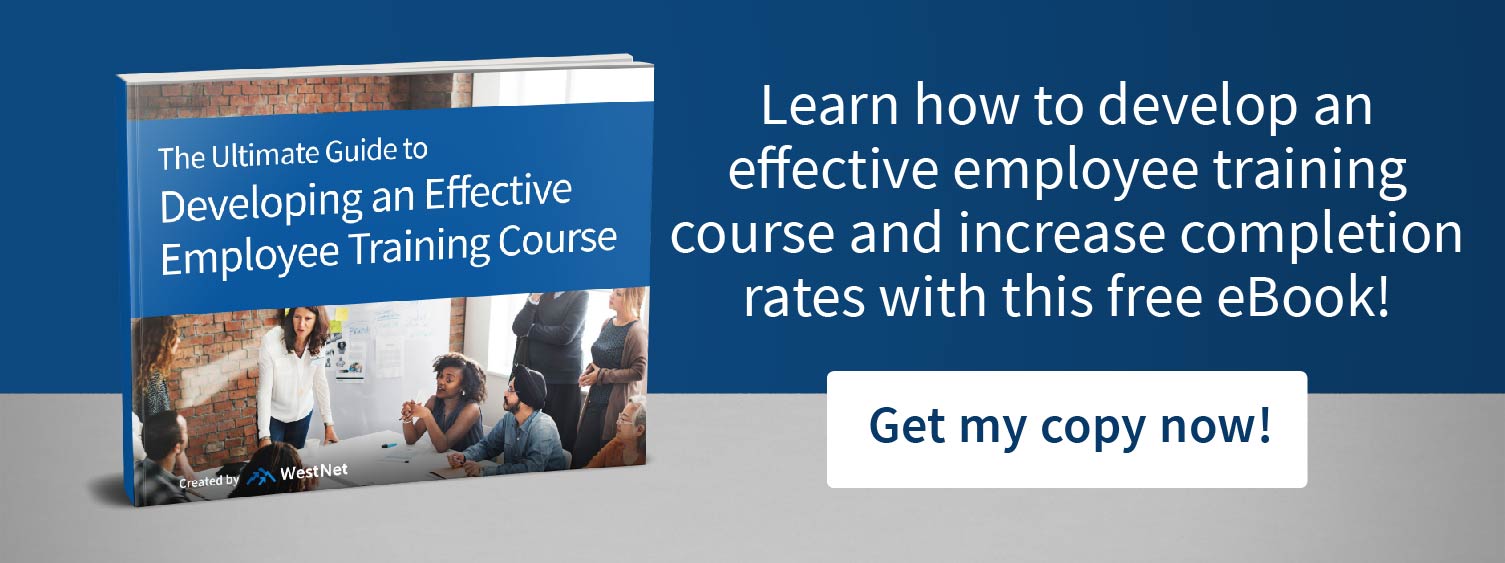As an HR director, you’re already well aware that your organization’s performance is inextricably tied to your employees’ professional competence, which is dependent upon the quality of your organization’s staff training program. One of your biggest challenges is to empower your employees to exceed performance benchmarks, and that means addressing their knowledge gaps most efficiently through educational course completion. Motivating your team to complete training courses and retain the knowledge that they need to excel is a delicate art, but one that is easy to demystify.
Why You Need a Learning Management System, Not Just a Training Program
Your team is likely already motivated to improve performance through training.
Whether the courses that you offer management and staff are mandatory or presented as optional continuing education, you’ve identified key areas of knowledge that your team needs to excel in and you want to ensure that they benefit from the content that you provide. The good news is that many highly motivated employees understand the value of employee training and are eager to participate.
According to one study of highly skilled managers, employer-sponsored training was thought of as the third most important aspect of their ability to succeed in their careers, behind support from senior management and increasing job responsibility. Surprisingly, the same study found that employee training represented one of the biggest differences between what high-potential managers valued and what they received from their organizations. That means some of your most promising managers are likely to be highly receptive to the launch or expansion of comprehensive employee training.
A learning management system makes employee training uniformly accessible to staff and management as well as customizable according to the unique educational needs of your team.
It isn’t just high-performing managers who want to support in addressing professional knowledge gaps.
Recent research revealed that 92% of employees believed that employee training was important to their career development, second only to a salary.
Another study showed that many employees are seeking performance-enhancing courses online independently through massive open online courses (MOOCs). When employers actively support motivated employees in their pursuit of job-relevant online learning, completion rates for MOOCs rise from 15% to 58%. But, unlike the customized employee training that a learning management system (LMS) can provide, MOOCs are one-size-fits-all experiences that are designed for a broad audience around a generalized topic.
With a robust LMS, your organization can easily create, launch, and distribute bespoke courses that harness your team’s desire to enhance their professional competence.
A powerful LMS will remove some of the biggest barriers to learning that hinder employee course completion, making training user-friendly, self-paced, and focused on engaging, high-impact content that addresses specific knowledge gaps.
A Corporate Training Audit: 5 Questions to Assess Course Impact
A recent poll found that although 98% of employers offer some form of employee training, a mere 26% of employees stated that they found these training courses effective.
Not only are employees failing to benefit from poorly designed or executed training programs, but according to a poll of 2,000 workers, approximately 44% of employees without adequate educational opportunities planned to leave their organization within five years because of poor training options.
Is your existing training program providing your management and staff the kind of learning experiences that advance professional competence and support job satisfaction?
Are your current courses designed to meet the needs of a diverse audience with self-paced learning modules and user-friendly access via popular mobile devices?
Is your training program providing learning pathways that engage the learner with unique content that takes advantage of multimedia applications to drive home key concepts?
Is it easy to track employee and management course progress and provide data-driven educational interventions as needed?
Is it simple to customize content to encourage engagement when high-performers master specific training content?
If your answer to any of these questions was “no,” it is time to take steps to improve your training program’s effectiveness in addition to course completion rates.
Start from the Goal: 3 Steps to Creating a Training Program That Your Team Will love
The following are three ways to create an effective corporate training program that organically improves management and staff course completion rates.
Impactful training programs promote job retention with content that is relevant beyond job skill maintenance.
While it is likely that your organization’s team and management staff are already interested in acquiring new skills and improving performance, they won’t hesitate to search for user-friendly learning solutions (or even a new position) that meets their needs for career development and educational enrichment.
For example, a recent poll revealed that employers with impactful training programs would prevent 86% of Millennials from leaving their jobs. That number is significant, as 51% of American workers reported that they are on the lookout for new job opportunities.
Step 1: Use a powerful LMS to provide content that promotes critical soft-skills (like communication and personal time management) which, according to researchers, help improve work-life balance and ultimately employee job satisfaction and productivity.
Courses that employees enthusiastically want to completely engage by design.
The lack of employee engagement is a loss leader across the global industry. According to recent research, employers lose as much as $550 billion annually in profits because less than 30% of employees feel engaged at work, and this leads to lower productivity during the workday.
Despite employers spending about $100 billion on employee training each year, the impact of skills-support is famously hit-or-miss when the quality of corporate courses does not match employee needs. Employee training that inspires workplace and content engagement is agile, providing context-driven activities and content that uses the latest user-experience design principles to make users connect effortlessly with the learning experience as a whole.
Poorly designed employee training courses are a “data dump,” focused on providing as much information as possible to the learner with little design thinking behind the accessibility of content. This type of information overload ultimately causes learners to skip critical portions of the text or simply tune out the rest of the course to simply plow through to the end. Researchers have found that well-designed online courses actually promote high levels of engagement during employee training because visual components tend to improve knowledge retention and course completion rates.
An advanced LMS will present well-designed educational activities that fit multiple learning styles and will be based on the latest educational research on how people learn best.
Employees who connect with training material do so because the content easily engages, allowing them to not only meet educational goals but also to connect more deeply to their workplace as a source of positive experience. In fact, one recent study showed that 93% of managers would feel more engaged at work if their employers provided high-quality training that supported career development.
Step 2: Design learning experiences that use multimedia and modern learning design principles to present accessible, relevant content in a user-friendly format.
Time is on Your Side (Really): Get Creative About Improving Course Completion
According to a poll conducted by a leading research firm, the number one reason employees and managers are not completing training courses is a lack of time. The majority of employees (68%) tend to prefer learning new skills through employer-sponsored learning, and most (58%) prefer self-paced study according to the same poll. That makes an LMS a perfect tool for improving your organization’s course completion rates.
In addition to self-paced learning, look for the following features in the LMS that you choose:
- Easy learner performance tracking and certification monitoring.
- User-friendly employee productivity and educational outcomes analytics available through a single dashboard.
- Simplified content creation that makes it easy to add media and graphics to learning activities.
- Streamlined admin communications allowing all HR staff to stay up-to-date on learners’ educational outcomes through automated notifications.
Step 3: Choose an LMS that is user-experience focused and offers self-paced learning experiences that are easily accessible on mobile and desktop platforms.
You Don’t Have to Start from Scratch
With the right LMS, you can eliminate a key barrier to learning engagement by making it easy for your employees and managers to complete courses at their own pace. Learn how to create a powerful employee training program that inspires enthusiastic learners.
WestNet Learning is an all-in-one LMS solution to easily train employees, increase employee productivity, and address safety needs. With customizable eCourse builders, analytics, reporting, certification, and re-certification tracking will help manage staff and stays on top of what matters most.
If you would like to learn more about how to engage and train your employees with efficiency to increase your training course completion rates, feel free to reach out and schedule a 1-on-1 strategy session.


